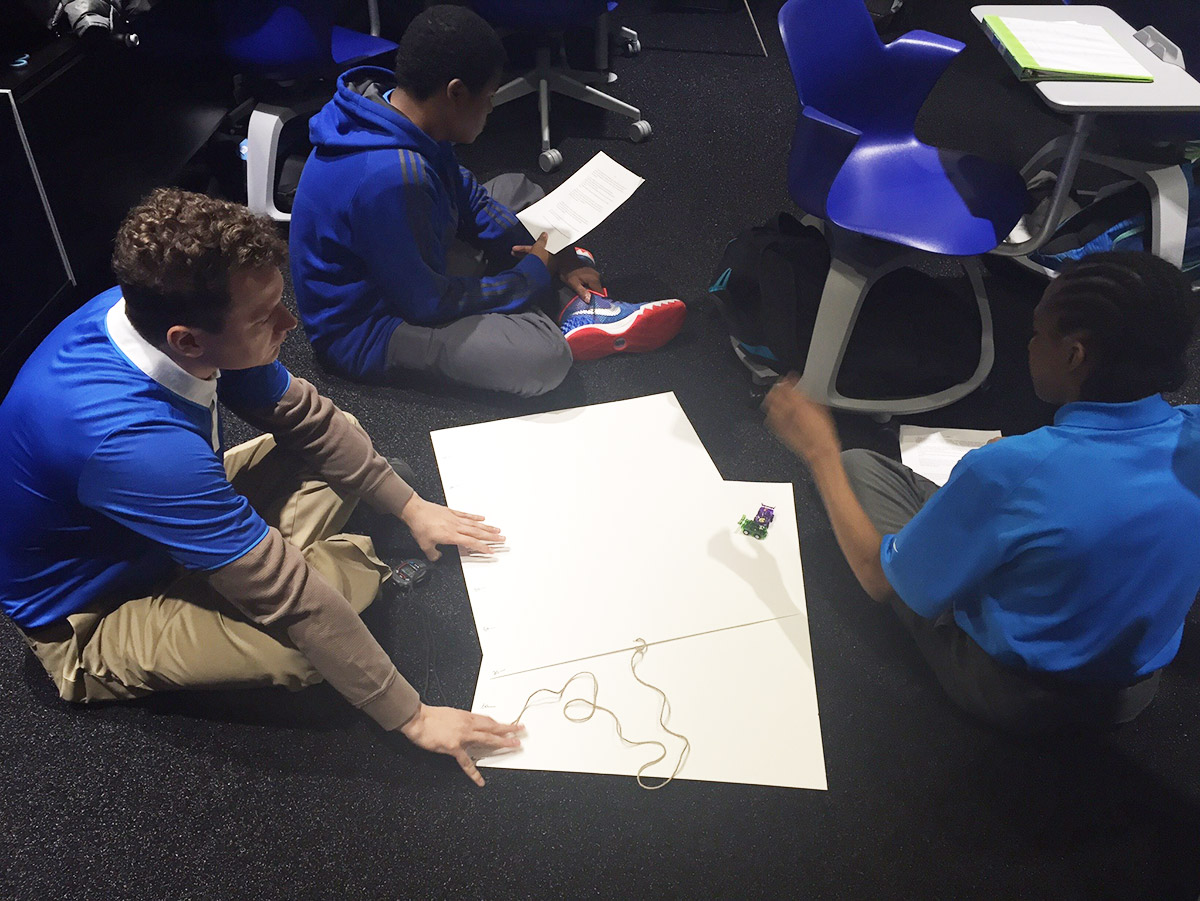By Tiffani Kolozian, STEM co-teacher
 In our after school STEM lab, we’re beginning to explore reference frames, the idea that we see motion differently depending on our vantage point.
In our after school STEM lab, we’re beginning to explore reference frames, the idea that we see motion differently depending on our vantage point.
One classic illustration of this phenomenon is a person walking on a moving train car. To a stationary observer on the side of the tracks, the person appears to be moving much more quickly than he does to a person standing in the same train car. Why? Because the observer on the side of the tracks sees the person moving at a combination of his own velocity and the train’s velocity.
To get into this concept, we started with a simple experiment on a Harlem sidewalk. One student stood on a rolling skateboard and tossed a golf ball straight up in the air while his classmates watched. Afterward, all of the students drew the path of the ball as they observed it. As you might expect, the skateboarder’s drawing was much different from the observers’. Why? Different frames of reference.
Our next experiment involved two identically marked pieces of poster board, one with a string tied through a hole on one end. The poster boards were laid on top of each other, and a wind-up toy car was put on top of the poster that had the string tied through it. As the car moved, a student pulled the poster. We then calculated the velocity of the moving car on the moving poster board and derived the car’s relative velocity.
These investigations will give our young men the opportunity to think about the velocity of a golf ball, and how the ball appears to move from different vantage points. For example, when wind is blowing parallel to a ball’s motion, the ball moves more quickly than it would with no wind. Why? Because the ball’s overall velocity is a combination of its natural velocity and the wind’s.